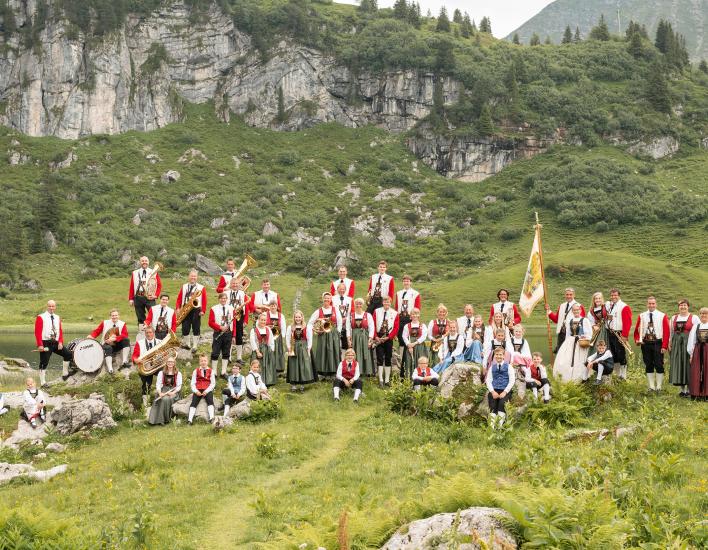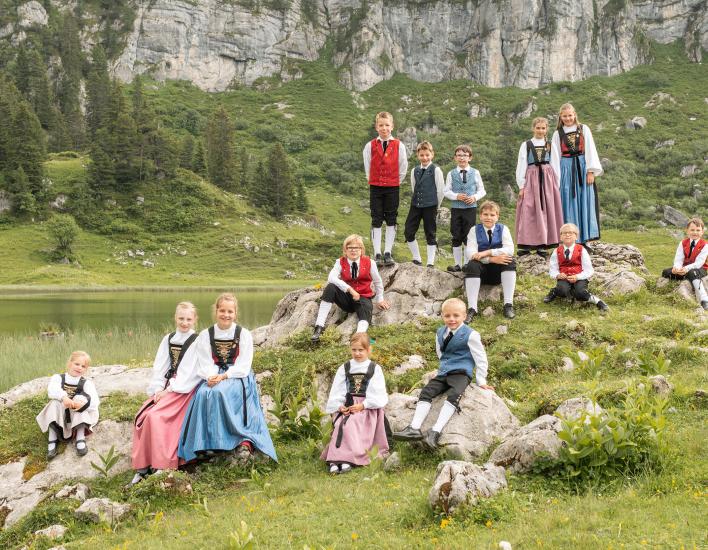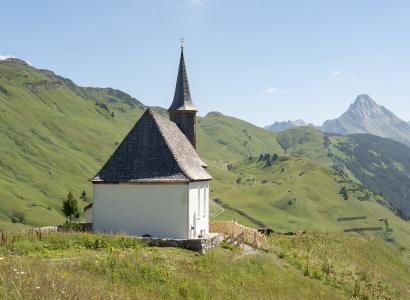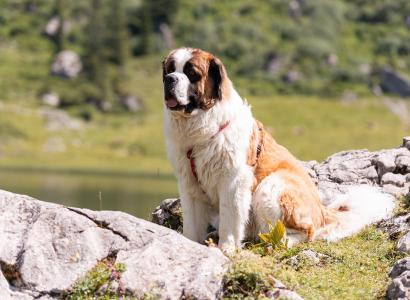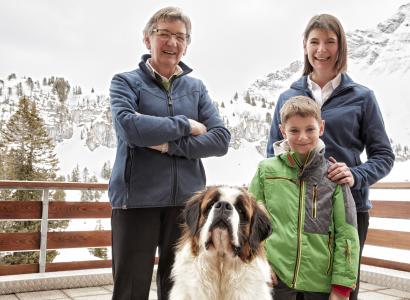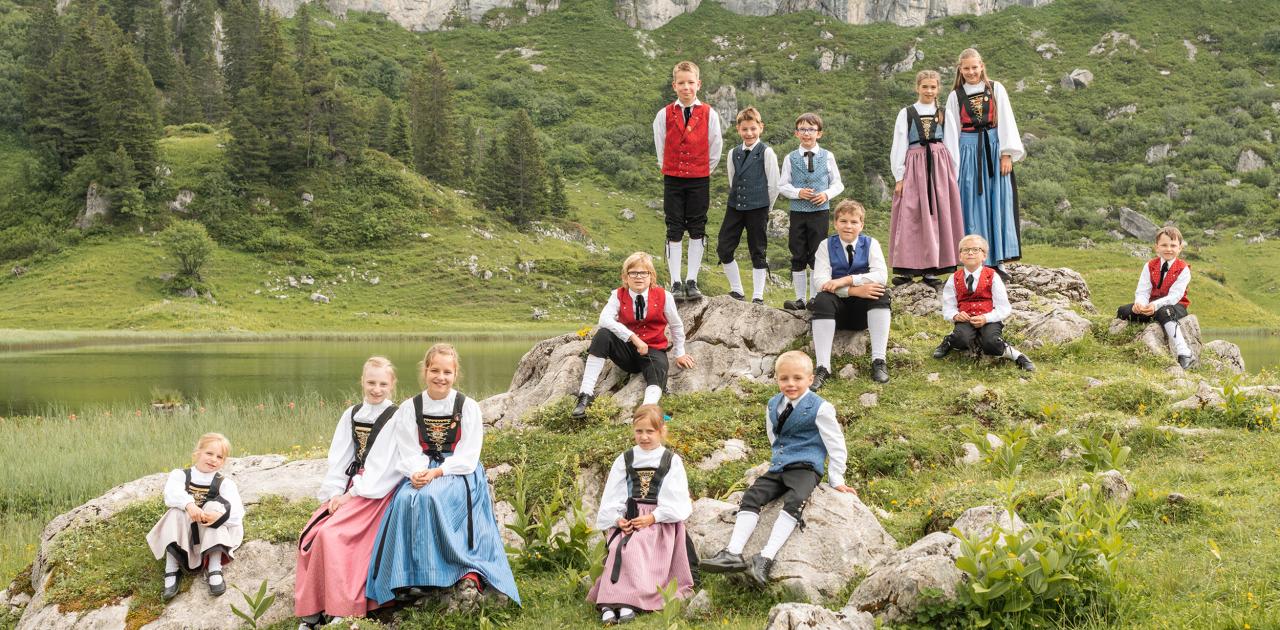
Our traditional costume: A sense of identity and belonging
Traditional costumes are as varied as are the regions they come from. The Walser costume – then and now.
In the evening I often go for a walk up to the lake. It brings me peace and energises me. Being here is not something I take for granted. Everyday I see the beauty around me and I feel the special energy of this place, even in my everday hustle and bustle. As the chairwoman of our local costume group I also try to keep our traditions alive, and it makes me very happy to see that we have a lot of young people joining us. Our costume today is based on the traditional Walser costume. When we founded our union in 1984, we had to study all the costume’s elements in a special museum and then we sewed our own. I think before that, the people around here simply wore the traditional costume of the Wälder people, our neighbours in the Bregenzerwald. But we are Walser people with our own fascinating history and traditions, and that’s what we try to honour and respect in our activities.
Annette Stangel, chairwoman of the local custome group and landlady at Haus Annette, Neßlegg
We are Walser people with our own fascinating history and traditions, and that’s what we try to honour and respect in our activities.
Annette Stangel, chairwoman of the local costume group
I dove deep into the history of the Walser people. There are two kinds of traditional costumes. There is the Walser festive costume – that’s the one our local costume group wears – and then there’s the Walser costume for boys or young men – that’s the one our local music club uses on festive occasions. It was supposed to be worn with a white pointed cap, but our youngsters refuse to wear that. The costume dates back to the year 1860, as you can learn at the museum for traditional costumes in Kleinwalsertal or in the museum of local history in Lech. Schröcken is a very typical Walser settlement, founded around 1400. Every family had about 2.5 hectares of land and a patch of forest to live on. They started settling rather further up on the hillsides to avoid having to carry hay and firewood uphill. This is something you can see in all the Walser settlements – obviously, the Walser people have always been practical people.
I particularly love a tiny little spot at Lake Butzensee, nestled between the peaks of Mohnenfluh and Braunarl. It’s just magical. The lake is emerald green in summer, and in spring, right after the snow has gone, a lush green carpet dotted with tiny red flowers surrounds it. For most of the warm season, this place is stone only, but for a few weeks, the lake is adorned with this lovely wreath. I like to go there and sit, marvelling at the power of nature.
Heinz Feuerstein, bandmaster and head of the children’s local costume group

